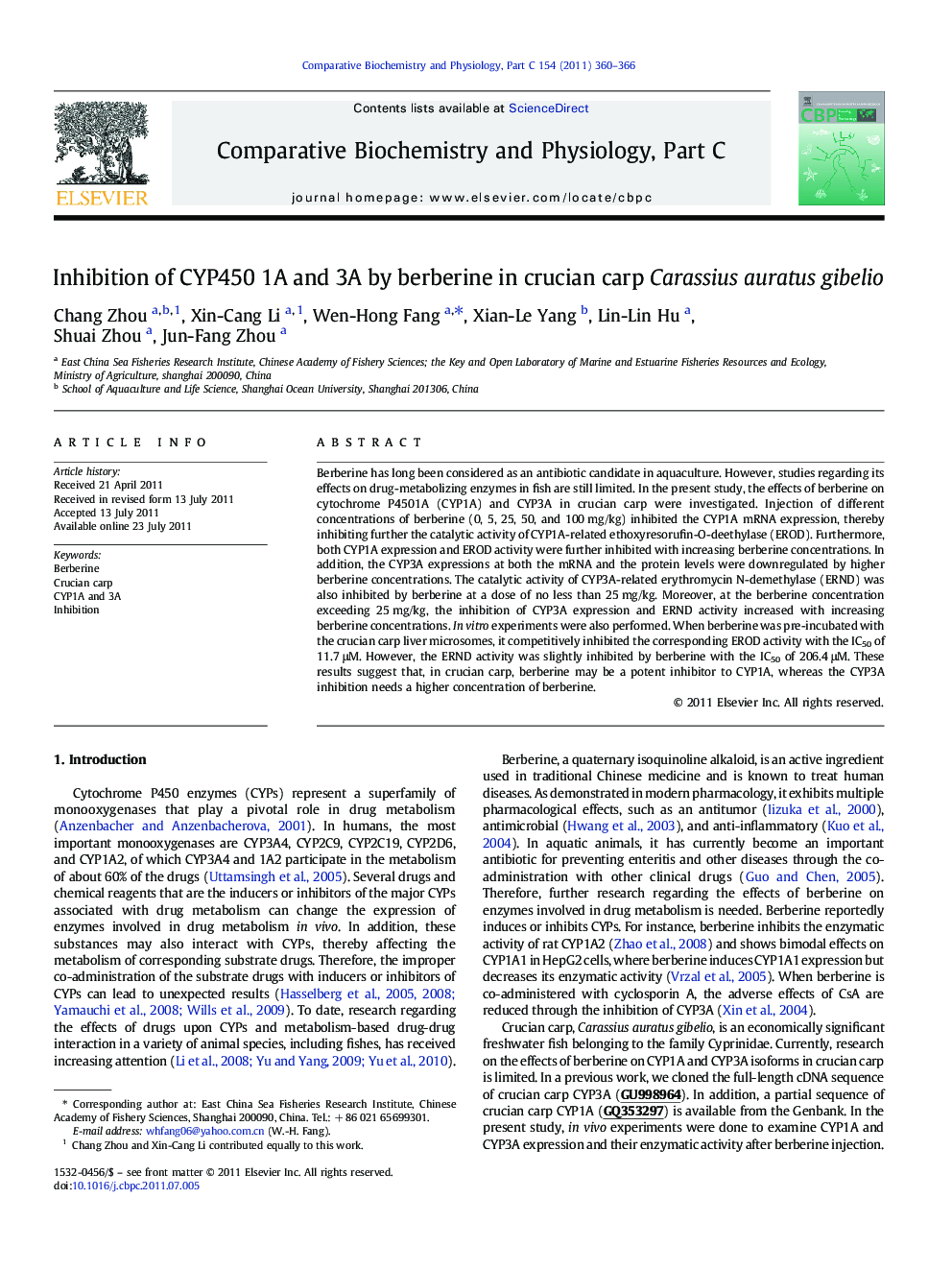| Article ID | Journal | Published Year | Pages | File Type |
|---|---|---|---|---|
| 10821697 | Comparative Biochemistry and Physiology Part C: Toxicology & Pharmacology | 2011 | 7 Pages |
Abstract
Berberine has long been considered as an antibiotic candidate in aquaculture. However, studies regarding its effects on drug-metabolizing enzymes in fish are still limited. In the present study, the effects of berberine on cytochrome P4501A (CYP1A) and CYP3A in crucian carp were investigated. Injection of different concentrations of berberine (0, 5, 25, 50, and 100 mg/kg) inhibited the CYP1A mRNA expression, thereby inhibiting further the catalytic activity of CYP1A-related ethoxyresorufin-O-deethylase (EROD). Furthermore, both CYP1A expression and EROD activity were further inhibited with increasing berberine concentrations. In addition, the CYP3A expressions at both the mRNA and the protein levels were downregulated by higher berberine concentrations. The catalytic activity of CYP3A-related erythromycin N-demethylase (ERND) was also inhibited by berberine at a dose of no less than 25 mg/kg. Moreover, at the berberine concentration exceeding 25 mg/kg, the inhibition of CYP3A expression and ERND activity increased with increasing berberine concentrations. In vitro experiments were also performed. When berberine was pre-incubated with the crucian carp liver microsomes, it competitively inhibited the corresponding EROD activity with the IC50 of 11.7 μM. However, the ERND activity was slightly inhibited by berberine with the IC50 of 206.4 μM. These results suggest that, in crucian carp, berberine may be a potent inhibitor to CYP1A, whereas the CYP3A inhibition needs a higher concentration of berberine.
Keywords
Related Topics
Life Sciences
Biochemistry, Genetics and Molecular Biology
Biochemistry
Authors
Chang Zhou, Xin-Cang Li, Wen-Hong Fang, Xian-Le Yang, Lin-Lin Hu, Shuai Zhou, Jun-Fang Zhou,
